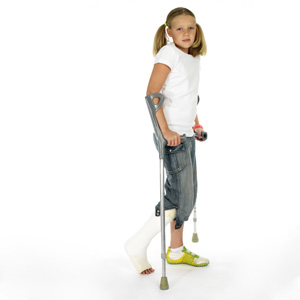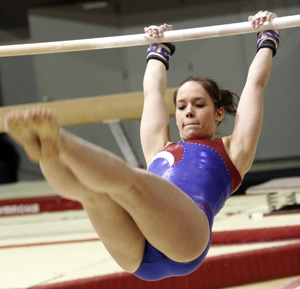How we can help
Acute
injuries 
According to the National SAFE KIDS Campaign, a local and national coalition, 20% of kids who play sports are injured, one out of four are seriously injured. The American Medical Association and Nemours Foundation cite that acute injuries occur primarily during team sports in which proper equipment is not used. Teenagers are more likely to suffer acute injury than younger children. As players grow in size and strength, the more force and potential for harm in a collision.
Examples of acute injuries include the following:
- Eye injuries to the cornea, retina, and eye chamber
- Broken bones
- Brain injuries
- Hemorrhage
- Skull fractures
- Damage to the spinal cord
Preventing acute injuries
Always make sure your child has protective wear, even during casual play. Impress upon them the importance of safety on the field and court. Know the dangers associated with each sport.
Overuse injuries
Even with safety precautions taken, injury is often unavoidable. The types of injuries that occur most often are called overuse injuries. Overuse injuries are caused by the repetitive use of a muscle group or limb, which interferes with a child's growth and musculoskeletal development. Overuse occurs over a period of time, but can have a dramatic effect on the child. Examples of overuse injuries include little league shoulder, swimmer's shoulder, shin splints and growth-plate injuries.
Preventing overuse injuries
Safety equipment will not prevent injury from overuse in all cases. Further precautions must be taken. The AMA recommends the following:
- Warm-up
before play or practice.

- Limit intensity and duration of practice or training.
- Do not pressure your child to perform.
- Watch for improper technique while playing sports and seek corrective lessons.
- Do not let your child use improper equipment for his/her sport.
Re-injury
Re-injuries are common and require special attention. It is important that an injury be given appropriate time to heal. According to the AMA, an injury that hasn't healed properly creates a much greater risk for re-injury to occur. Additionally, when an injured player re-enters the game, he or she is more likely to injure another part of the body while compensating for the previous injury.
Preventing re-injury
Allow plenty of time for the injury to heal. Visit your pediatric orthopedist
before allowing your child to return to their sport, even if he or she
says they feel better. Make sure your child wears his or her braces or
support equipment, as instructed by the physician.
Learn more about preventing
sports injuries
High-risk sports
 In most cases, it is not necessarily the nature of the sport that is dangerous
but the lack of safety precautions taken that leads to injury. Some sports
and activities with higher rates of injury do not traditionally use or
enforce the use of safety equipment. According to the American Academy
of Orthopaedic Surgeons, injuries related to in-line skating, soccer,
gymnastics and trampolines are seen most frequently in emergency rooms.
This may be surprising to many parents.
In most cases, it is not necessarily the nature of the sport that is dangerous
but the lack of safety precautions taken that leads to injury. Some sports
and activities with higher rates of injury do not traditionally use or
enforce the use of safety equipment. According to the American Academy
of Orthopaedic Surgeons, injuries related to in-line skating, soccer,
gymnastics and trampolines are seen most frequently in emergency rooms.
This may be surprising to many parents.
Parents and coaches should make every attempt to ensure that both sports equipment and environment are safe. It is imperative to fit children with proper safety gear and to educate them about safety habits and correct form.
The U.S. Consumer Product Safety Commission reports the following statistics for 1995:
| Sport |
Number of injuries |
Cost to consumer |
| In-line skating |
123,880 |
$702.1 mill |
| Soccer |
70,872 |
$351 mill |
| Trampoline |
52,103 |
$272.6 mill |
| Gymnastics |
27,483 |
$139.3 mill |
